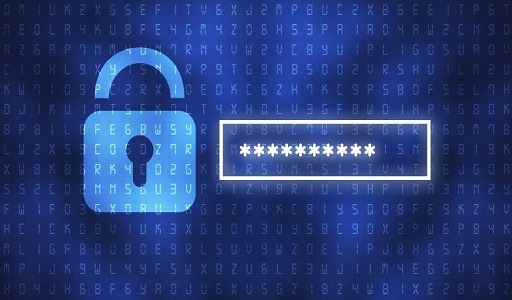Nothing is more crucial than maintaining the confidentiality and safety of sensitive information when it comes to cybersecurity. Individuals as well as major organizations should put up the work necessary to achieve this goal.
But what is the most effective and uncomplicated method for protecting sensitive data, such as files that you do not want other people to access? Locking with a password and encrypting data spring to mind. The question now is, what exactly is the distinction between the two terms?

What is a Password Locking?
The act of safeguarding information by encoding it with a series of symbols is referred to as “password locking.” Every one of us makes use of this straightforward yet effective method of access control on a regular basis with the intention of preserving both our safety and our privacy in the process.
The usage of passwords as a form of security has advanced significantly over the years, and they can now be implemented on practically any device or program.
These days, the majority of online services need you to use a password that is both simple and complex, consisting of a combination of lowercase and capital letters, numbers, and special characters.
Users of some services are required to update their passwords on a regular basis, while users of other services are required to use two-factor or multi-factor authentication. The data that is saved on a device can, of course, also be safeguarded with a password if one is used.
For instance, you presumably have a pattern lock, a personal identification number (PIN), or biometric verification set up on your phone; all of these methods can be categorized as forms of password locking. Along the same lines, it’s possible that you’ve also set up a password protection on your Windows machine.
A password can, of course, also be used to secure certain files and folders individually. This is a simple process that can be carried out on almost any smartphone, regardless of whether you have an iPhone or an Android device.
Some programs also support the use of a personal identification number (PIN), a pattern, or biometric authentication; for example, the majority of apps connected to online banking include this functionality.
On desktop computers, the procedure is somewhat more difficult to carry out. A built-in function that would allow one to password lock a file or folder is not included in newer versions of Windows; nevertheless, this task can be accomplished extremely easily by making use of free software that is provided by a third party, such as WinRAR.
Right-click on the file or folder you wish to protect, then pick Send to > Compressed (zipped) folder from the drop-down menu. After that, you will be prompted to provide a password for the protected file or folder. On macOS, it is also possible to set a password to secure individual files and folders.
How does Password Encryption work?
To explain what encryption is and how it operates, specialists frequently make use of jargon such as salt, SHA-1, and private key. Particularly for individuals who do not come from a background in computer science, the terminology can be very frightening.
To put this another way, the process of encrypting a password involves taking the original word and running it through a series of randomization processes.
There are primarily four different kinds of encryption.
-
Symmetric key
Encryption and decryption capabilities are built into your system thanks to a key. You can scramble your password by moving it through this key, and then you can read it again by moving it back through the key in the opposite direction. In order to take over your password, a hacker has to get the key.
-
Public key
Your ability to change your password is dependent on two different keys. The first one, known as a public key, can be utilized by anybody. The other type of key, known as a private key, is only accessible to a limited number of people. If you use one to encrypt a message, the recipient will want the other in order to decode it and understand what it says.
-
Hashed
Your password will be converted into a completely random string of letters, numbers, and other symbols by an algorithm. In order to crack your password, a hacker has to know the algorithm that you used to modify it, which isn’t always straightforward to figure out.
-
Salted
Before your password goes through the hashing process, a few random digits or letters are added to either the beginning or the end of it. In order to decode the message, a hacker needs to not only know the hash, which is not always simple to find, but also your hashing algorithm.
Your system administrator has the option of using a salt that is either fixed, in which case each password will use the same salt, or variable, in which case the salt will be different for each password.
The outcome will be the same regardless of the method that your firm uses to manage encryption. After a certain amount of time, the password you use will transform from something you are familiar with and can easily recall into something that appears to be absolutely random.
How Does Encryption Work
People frequently get password protection and encryption confused with one another, and some even use the terms interchangeably. In point of fact, they are two entirely distinct entities, despite the fact that there are some parallels between the two.
Encryption, in its most basic form, refers to the process of encoding data in such a way that it cannot be read by anybody who is not permitted to view it.
This is achieved with the help of intricate mathematical procedures, which jumble up the data and make it so that it can be decrypted by no one save those who have the correct key.
If you encrypt a file or folder, then no one but you will be able to access its contents once it has been encrypted. Even if someone were to break into your computer, they would be unable to decrypt any of the information if they did not also have access to the decryption key.
The essential question is whether or not data can be decrypted even in the absence of a key. In principle, the answer is yes; even the most robust encryption methods can be broken into.
In actuality, this is a very remote possibility. A protocol like AES-256 is so difficult to break that it would take supercomputers thousands of years to do it. This will not change any time soon until somebody finds a major flaw in the AES-256 encryption standard or another protocol with similar capabilities.
It should come as no surprise that encryption is a significantly more secure method than password protection. Encryption is something you should seriously consider utilizing if you regularly deal with sensitive information, if you have important financial or legal papers on your computer, or if you just want to improve the level of privacy and protection you have over your digital life.
Encryption is by far the superior choice, but this does not negate the usefulness of requiring a password to access a resource. Password locking is undeniably a move in the right direction.
If you choose to protect your data with encryption rather than a password, are there any potential drawbacks to this approach? There are techniques to retrieve your password in the event that you misplace it or forget it.
On the other hand, if you misplace your encryption key, there is very nothing you can do about it. Because there is no way to decode it without a key, your data will be lost forever. There is no other option.
How to encrypt your data
Utilizing specialized software is, without a doubt, the most effective method for encrypting files and folders on a desktop device. There are a number of excellent encryption tools available, each of which is both powerful and simple to employ.
There are several of them, including NordLocker, AxCrypt, Folder Lock, Steganos Data Safe, and the Advanced Encryption Package. Some of these tools come with free trials and are compatible with computers running macOS as well as computers running Windows.
You also have the option to encrypt your entire disk without spending any money if spending money on encryption software is not an option for you. BitLocker is a free application that has been available from Microsoft ever since Windows Vista.
You can use it to encrypt the entirety of your hard disk or just a portion of it. Because it employs the AES encryption technique, the level of security it offers is exceptionally high.
A built-in encryption tool is also available on Macintosh systems. Even if you’ve never worked with software of this kind before, you should be able to get the hang of it reasonably fast because of its user-friendliness and straightforward interface, which goes by the name FileVault.
FileVault, much like BitLocker, uses AES encryption, which means that you do not need to be concerned about the possibility of it being broken.
However, you cannot use these programs to encrypt individual folders and files; rather, you can only use them to encrypt either the entirety of a hard disk or a portion of it.
This is not really a disadvantage because there is no valid reason to not encrypt your complete system, but it is absolutely something you should keep in mind because it could be a problem in the future. On the other hand, if you use commercial encryption software, you will be able to encrypt both individual files and folders.
The primary disadvantage, which is shared by all encryption strategies, is that there are no means to decrypt your data in the event that you misplace or otherwise cannot access your cryptographic key. Because of this, you need to give some thought to backing up all of the data that is important to you, whether it be online or on a hard drive that is separate.
Encrypt your data to ensure its safety
Password protection has been an essential security mechanism for a very long time, and it is very likely that this will continue to be the case for many years to come.
Encryption, on the other hand, is without a doubt the most effective method for protecting sensitive information, whether it be private photos or official documents that you don’t want other people to see.
If you want to improve your security and privacy for little to no expense, you should absolutely consider encrypting your data. Also, be sure that you are utilizing zero-knowledge encryption, as this is the method that offers the highest level of protection.
Would you like to read more about Password Locking vs. Encryption-related articles? If so, we invite you to take a look at our other tech topics before you leave!









